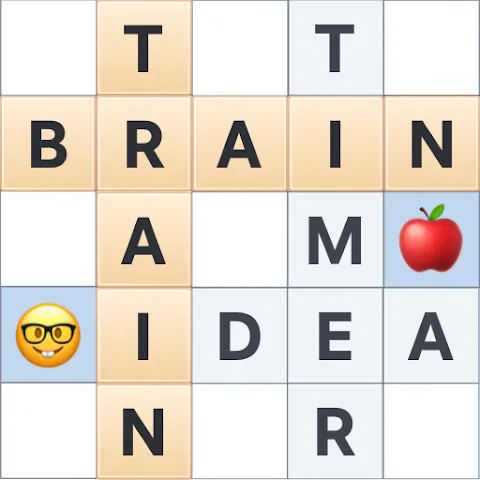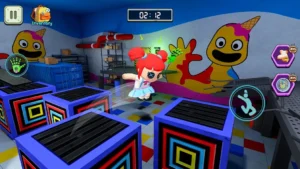
Prison Escape from Toy Yard mod apk (unlimited money and gems)

| App Name | Prison Escape from Toy Yard |
|---|---|
| Latest Version | 2.0.3 |
| Last Updated | 12 Mai 2025 |
| Publisher | QUEEN STUDIO |
| Requirements | Android Android 7.0+ |
| Category | Games |
| Size | 209M |
| Google Playstore |

|

| App Name | Prison Escape from Toy Yard |
|---|---|
| Latest Version | 2.0.3 |
| Last Updated | 12 Mai 2025 |
| Publisher | QUEEN STUDIO |
| Requirements | Android Android 7.0+ |
| Category | Games |
| Size | 209M |
| Google Playstore |

|
In the heart of a child’s fantasy realm lies an unexpected nightmare—Toy Yard, a vibrant place of imagination turned into a high-tech prison. What was once a haven of playful toys now stands as a fortress of containment, housing miniature inmates made of plastic and rubber. This quirky juxtaposition between joy and punishment forms the eerie charm of “Prison Escape from Toy Yard”, a game that captivates with its bizarre yet creative concept. At first glance, it may seem lighthearted, but there’s a deep psychological thrill beneath the surface.
Players are thrust into a world where teddy bears patrol like robotic guards, and Legos form walls too tall to climb. The genius behind this game lies in its visual contradictions—bright colors mask dark motives, and the adorable setting creates an atmosphere that’s deceptively tense. From bouncing jack-in-the-box traps to remote-controlled helicopters monitoring from above, Toy Yard is no ordinary prison. It’s alive, aware, and always one step ahead. Escaping requires not only strategy but an understanding of the environment’s twisted logic.
The psychological pull of Prison Escape from Toy Yard is rooted in the way it plays with innocence and fear. Imagine running from a giant plush bunny guard while plotting a way to unlock a candy cane gate with a hairpin. The thrill of planning your escape amidst surreal surroundings adds depth and replay value. The theme taps into childhood nostalgia and flips it, transforming symbols of joy into tools of control. This contrast is what sets the game apart in a crowded escape genre.
Your first moments in Toy Yard are overwhelming—colors explode, toys chatter, and yet a cold sense of being watched creeps in. The rubber walls, seemingly soft, are reinforced with an AI-controlled bounce system, tossing players back to their cells with force. But it doesn’t take long before you notice the pattern in the madness. There’s rhythm to the surveillance, a predictable dance of toy guards and mechanical eyes. This is the first lesson: observation leads to liberation.
The prison layout isn’t linear. Instead, it’s built like a child’s scattered imagination—interconnected tunnels made of plastic pipes, secret passageways behind toy chests, and puzzle-filled zones inside abandoned dollhouses. Each room offers riddles and challenges with escalating difficulty. You’re not just breaking out; you’re solving a web of interconnected mysteries. These rooms function like cognitive tests—memory, logic, even dexterity all come into play. And with every puzzle solved, a piece of the escape route is revealed.
An innovative mechanic introduced in the game is the ability to interact with the toy environment in unorthodox ways. For example, you might ride a wind-up train to access higher levels or distract a guard with a windmill toy. These clever integrations keep the gameplay fresh and challenge players to think creatively. Prison Escape from Toy Yard rewards experimentation, and every escape attempt is different. This variety makes it more than a game—it’s a customizable escape story written by the player’s choices.

No great escape is a solo mission, and Prison Escape from Toy Yard understands this deeply. As you navigate the colorful yet treacherous yard, you’ll discover other inmates—abandoned toys with tragic backstories and unique abilities. From a headless action figure who can crawl through vents to a talking robot dog that can unlock magnetic doors, each ally you find adds depth and strategic options to your plan. Choosing whom to trust is part of the thrill.
The camaraderie among the characters offers more than functional benefits—it adds emotional weight to your journey. Many toys have been trapped in Toy Yard for years, and their stories unfold through interactive dialogue and mini-quests. These side missions not only flesh out the narrative but provide crucial items and blueprints for escape. The relationships you build can directly affect your ending—save everyone, or escape alone at a moral cost. The game subtly challenges your sense of loyalty and sacrifice.
Here’s a quick look at standout allies:
Stitch: A raggedy bear with sewing powers—he repairs bridges and patches holes in the plan.
Buzzbit: An electronic insect toy that disables alarms.
Clanky: A wind-up knight who creates distractions by starting toy fights.
Each ally can only be used a few times per mission, so you must strategize their inclusion carefully. The beauty of Toy Yard lies in its unpredictability—the combination of allies you choose leads to multiple escape outcomes. This replay value adds another layer of strategy and encourages players to explore every possibility.
As the escape plan unfolds, the intensity rises. Toy Yard is not just full of quirky challenges—it’s equipped with a terrifyingly efficient security system. Think drone-operated jack-in-the-boxes, walls that rearrange themselves, and a central AI named “PlayMaster” who monitors every move. Outsmarting this mechanical overlord is the core objective, and it requires perfect timing, pattern recognition, and sheer bravery.
The game’s AI system is dynamic—every failed attempt teaches the PlayMaster something new. Traps become harder, patrols become smarter, and secret routes start closing. This creates a realistic sense of urgency and evolution. Players can’t rely on a single method for success. They must stay two steps ahead of the AI, using decoys, misdirection, and quick thinking. This gameplay loop keeps players hooked, as every attempt feels like a chess match between human wit and artificial control.
Even the smallest mistake—knocking over a toy block or stepping on a squeaky duck—can alert the guards. The stakes remain high, and tension builds with every footstep. The payoff, however, is worth it. Reaching the outer yard and finally opening the candy-coated exit gate is pure satisfaction. You don’t just win—you escape with a story, with scars, and sometimes with friends who helped along the way. It’s a toy escape like no other, mixing stealth, strategy, and storytelling into a satisfying whole.
At its core, “Prison Escape from Toy Yard” is not just a game—it’s an interactive story that blends nostalgia, suspense, and clever game design. What makes it a standout title is its commitment to creativity. Instead of relying on gore or dark aesthetics, it uses brightness and whimsy to deliver something truly chilling and original. This paradox—fear through fun—is what keeps players coming back, escaping not just from a prison, but into a world where imagination becomes a weapon.
The game also shines from a technical perspective. Its vivid graphics, intuitive controls, and immersive sound design elevate the entire experience. The giggles of toy guards, the clinks of gears, and the eerie whispers of forgotten dolls create an atmosphere that’s both magical and menacing. Coupled with a dynamic AI system and branching storylines, the game ensures each playthrough is different, making it one of the most re-playable indie titles on the market.
In a world saturated with predictable escape room games, Prison Escape from Toy Yard offers something refreshingly unique. It challenges the genre with its tone, mechanics, and emotional storytelling. Whether you’re a fan of puzzles, stealth, or just love quirky game worlds, this title deserves a spot on your radar. Escaping from prison has never looked this colorful—or this clever.